My Body Gadget (Part # 1)
"Beauty requires sacrifice. But increasingly, it requires money. So much money".
(from case history)
Gadgets, they are like women today. They are attractive, they are elegant, they are desirable for almost everyone, they look forward to their appearance, turning into fights, and, most importantly, they are everywhere. Gadgetfobs are also found - wherever without them - but their circle is small. As for the women themselves, it seems that their convergence with gadgets imperceptibly happened a long time ago and irrevocably. And now absolutely everywhere you can meet those who are engaged exclusively in their smartphone. Manufacturers of the latter would like to repeat the success of the new round of development of gadgets. For example, in the field of electronic watches and fitness bracelets, but so far, however, this has not happened, apparently due to the limited need for such devices. Well, all is not lost. Below we will see what today with the development of the Internet of Things (IoT) offers us the market of modern gadgets.
Wearable over
The development of the so-called “Internet of things”, which we have been broadcasting from the same gadgets for several years, promises new life to whole classes of wearable electronics, starting at least with clothes. Actually, the term “wearable electronics” appeared about ten years ago, although devices of this class existed for a long time. The first of these devices were electronic watches. The next was the emergence of a mobile phone, and after it - a multimedia player. Today, this class of equipment includes all electronic devices that are worn by the user on themselves or embedded in clothing, other accessories: gloves, shoes, hats, jewelry.
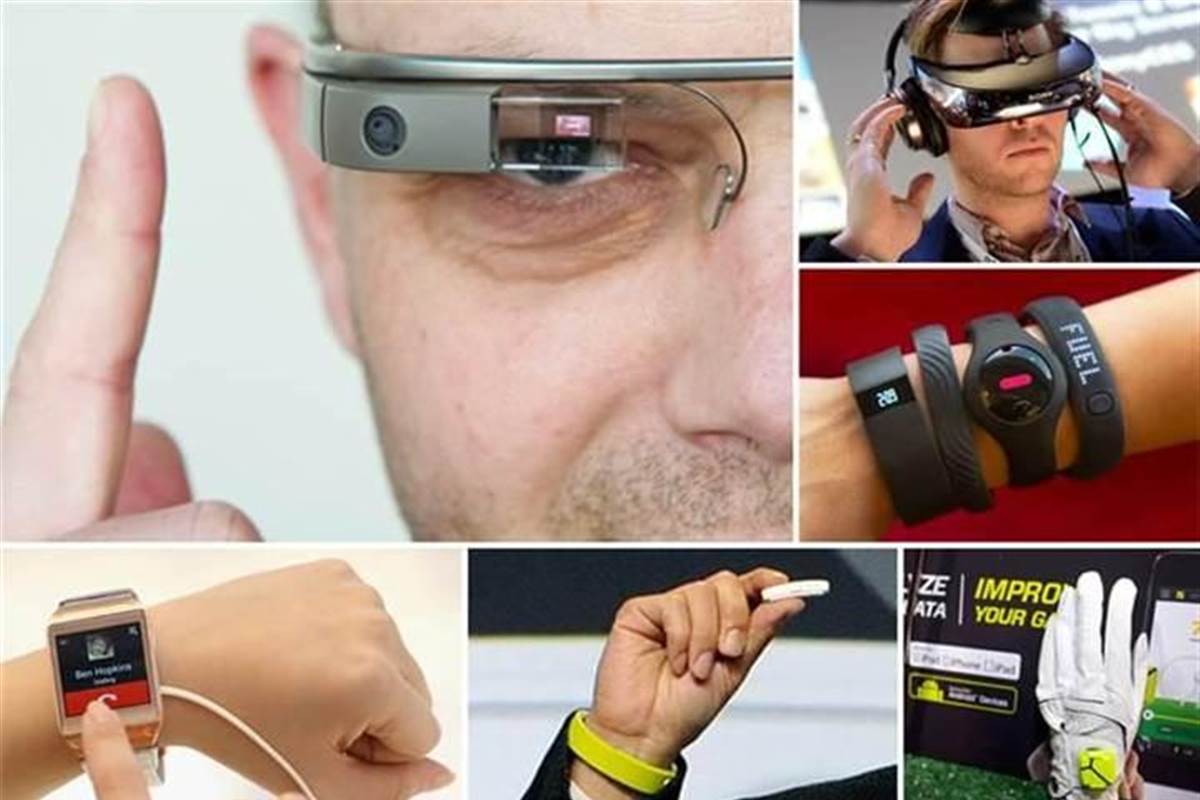
The simplest type of wearable electronics is smart fabrics or clothing (smart fabrics). Get at least from the simplest unloading vest for gadgets from the American company ScotteVest, which provides not only a lot of pockets, but also patented internal spaces for wires and cables. It seems that these patents will not bring profit to the owners. More sophisticated solutions with sensors built into clothing for various purposes, from medical to sports and from monitoring to security, also exist for more than 10 years, but they usually have a narrow specialization and, as a result, a noticeable increase in the weight and size of clothing.
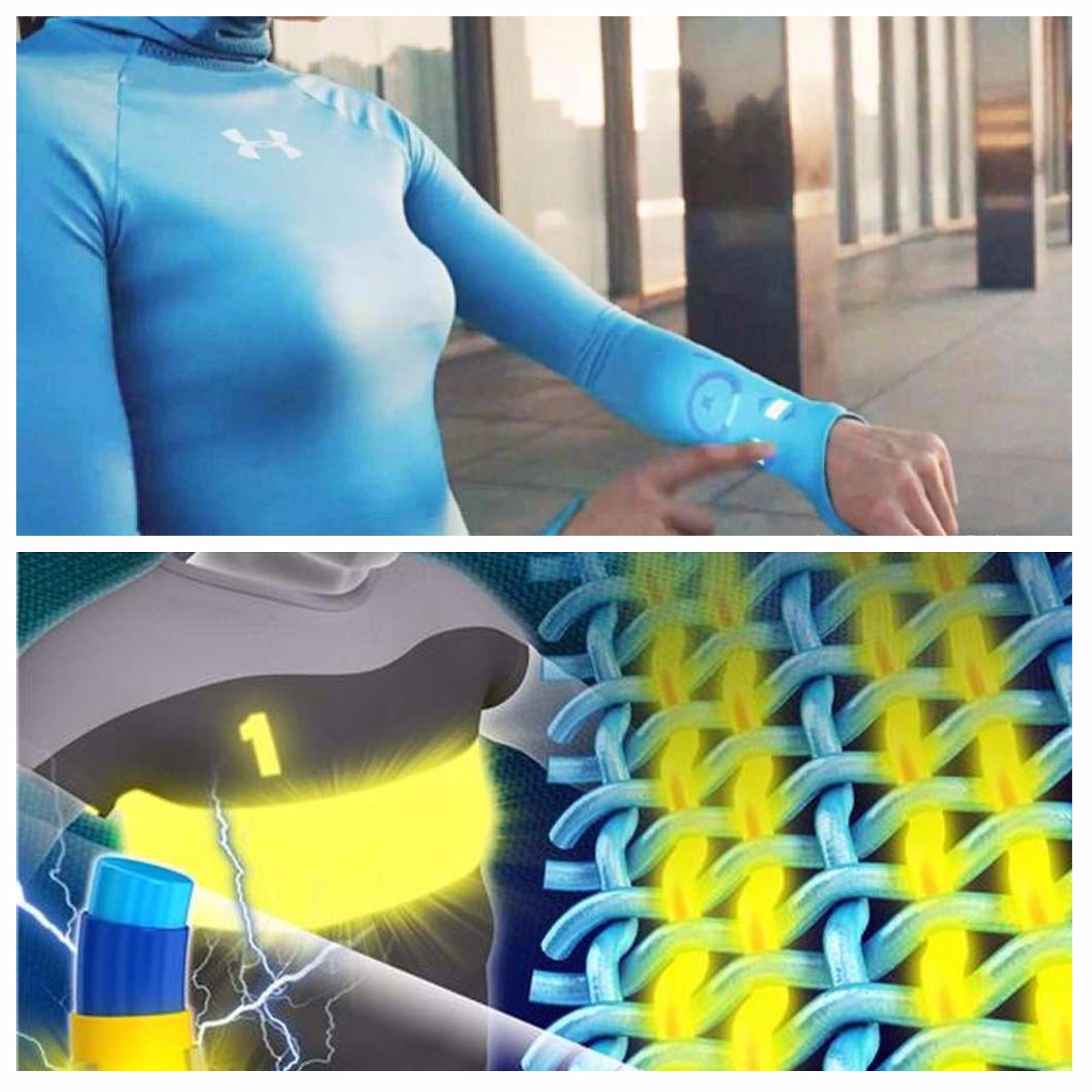
Designing clothes integrated with electronics to control gadgets or interact with them is another fashion trend. By increasing the level of integration and miniaturization of electronic components, you can get an electronic system that is fully integrated into clothing, including electronic modules, intermodular connections, sensors, data entry interfaces and various indicators. In some cases, power supplies can be embedded in clothing. This is the second generation of smart fabrics, which has a higher level of integration and even its own term SFIT (Smart Fabric and Interactive Textile) . Its wide distribution is hampered only by a narrow niche of application and the absence of generally accepted standards. On the other hand, modern electronics are improving too fast to be followed by some standards of both fashion and technology.

One of the applications of smart fabrics is to ensure the personal security of a person. This is just a SOS signal, and even shoes with a built-in stun gun, triggered by an alarm button on the remote control hidden in the necklace. There is also a baseball cap with a built-in DVR or glasses with a video camera.
Carry around
It is difficult to say whether “smart” cars can be attributed to wearable electronics, but recently they are rapidly turning into mobile gadgets, which their users are now embedded in and which require appropriate protection. Each next generation of cars demonstrates the increasing integration of technologies, including for remote diagnostics, telematics, self-government and a variety of information exchange (infotainment).

A large number of third-party applications, the complexity of the systems themselves and the ever-growing volume of updates today make it difficult to check automotive systems for cyber threats, as well as software and architectural errors. Now they are ready to protect their owners, and, in particular, at the New Mobility World / IAA 2017 forum in Frankfurt, Kaspersky Lab and AVL presented a prototype of the Secure Communication Unit (SCU) for such cars. With all its convenience, modern cars remain potentially vulnerable to attackers, and a safe and secure SCU module will become a single point of entry / exit for all connections and communications of automotive systems.

It is worth recalling that today “smart” cars are not only a mixture of transport, robot and artificial intelligence, as reflected in the mass consciousness of future consumers. In fact, "smart" cars are divided into: autonomous (self-driving) and semi-autonomous; possessing an advanced onboard navigation system and infotainment; environmentally friendly electric cars and cars with alternative power systems; exclusive or unique representatives of the world of cars, created with a specific purpose.
Almost like clothes
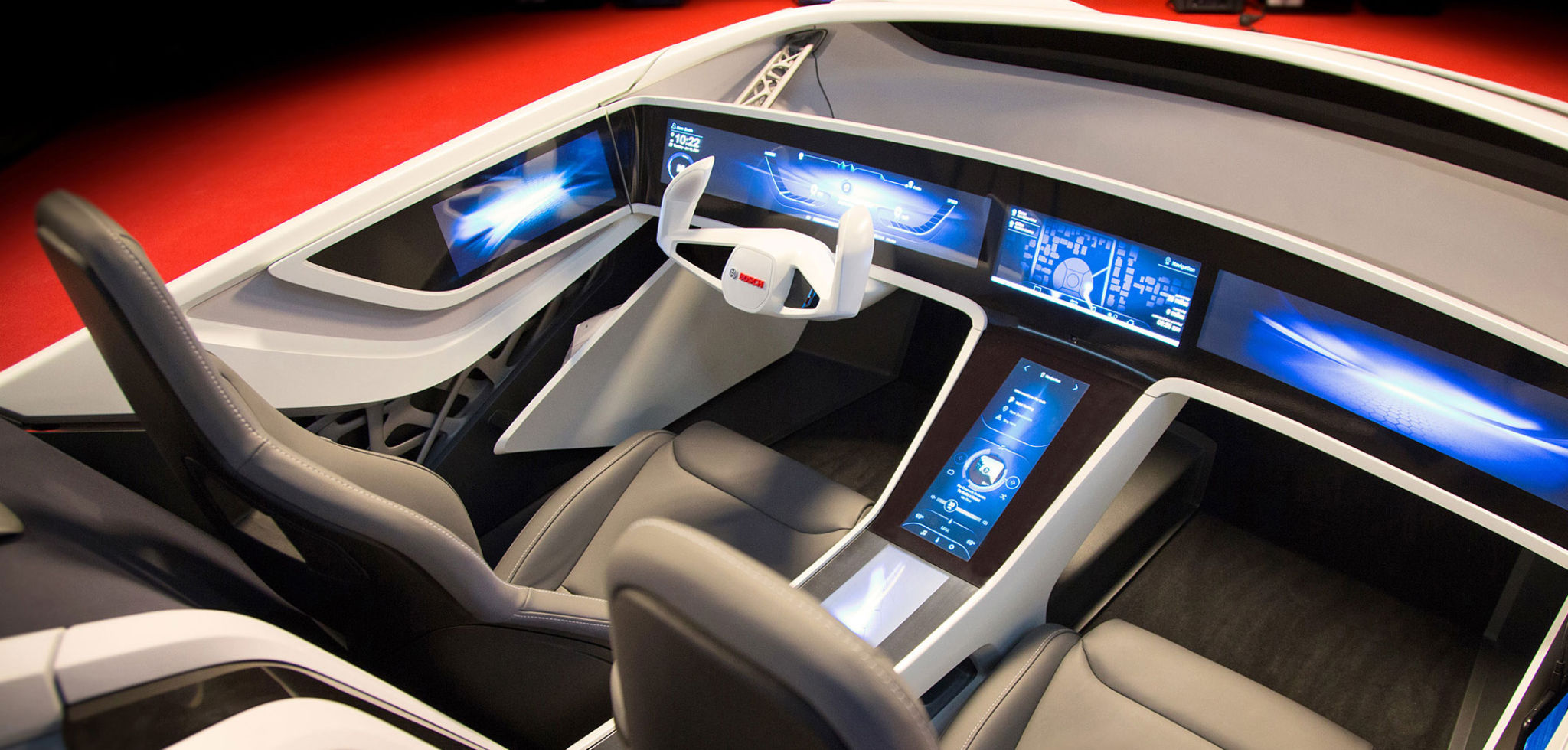
Increasingly, “smart” cars mean precisely cars that do not need a driver, Google designs that have their own set of sensors for moving on roads, not equipped with a steering wheel and pedals and promising to revolutionize the world of road travel. In the end, a car with which you can talk (using Siri, for example) can also be called “smart”. However, driving a car with wearable electronics will obviously also be possible.
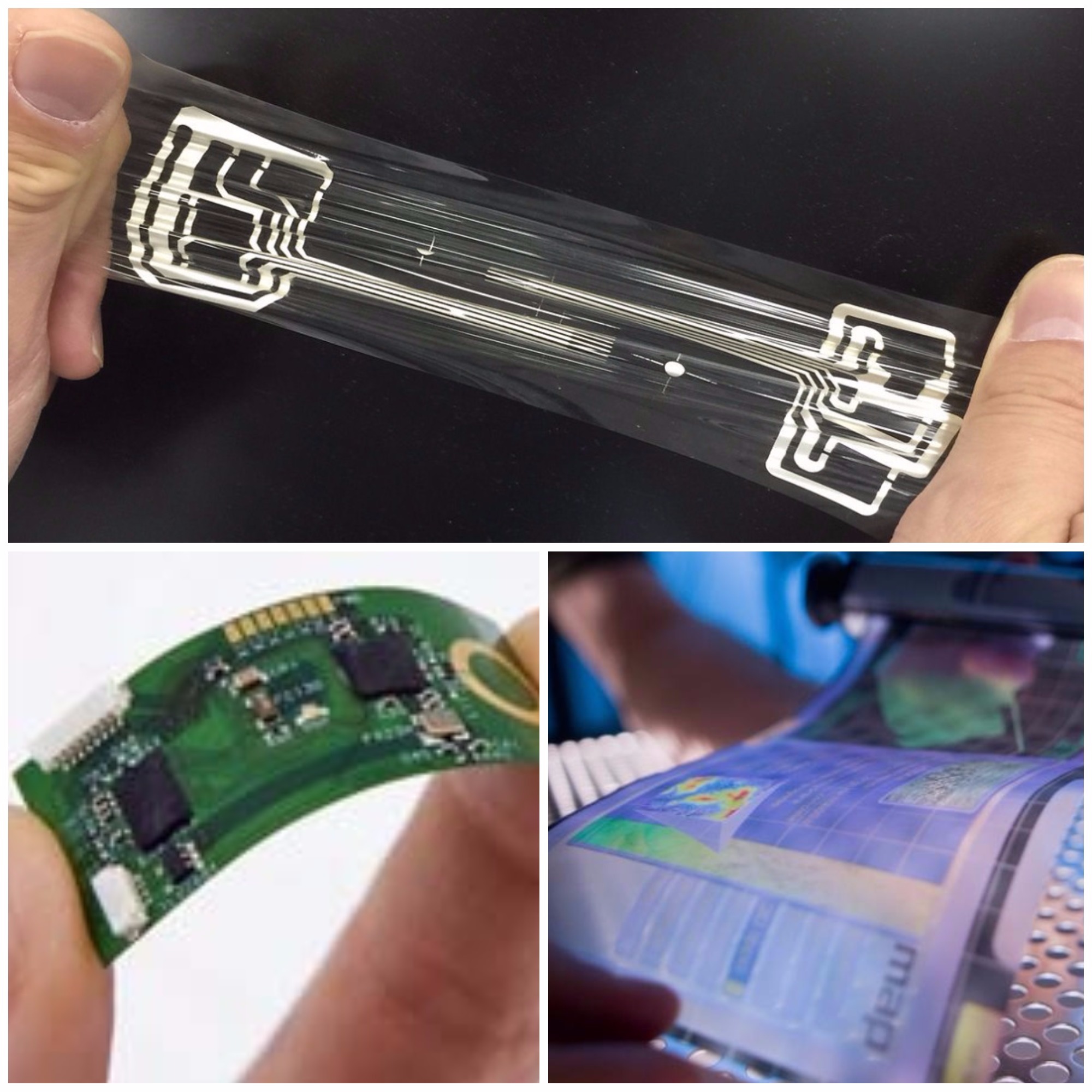
Source # 1 , Source # 2 , Source # 3
In order for electronic circuits and conductors to be embedded in clothing or various devices that are worn on the body, they must be not only flexible, but also very elastic. The technologies of “electronic fabric” and “flexible electronics” (flexible electronics) are interconnected not only with each other, but also with the same “smart” cars. They imply the creation of new materials and methods for the production of electronic circuits on flexible substrates.
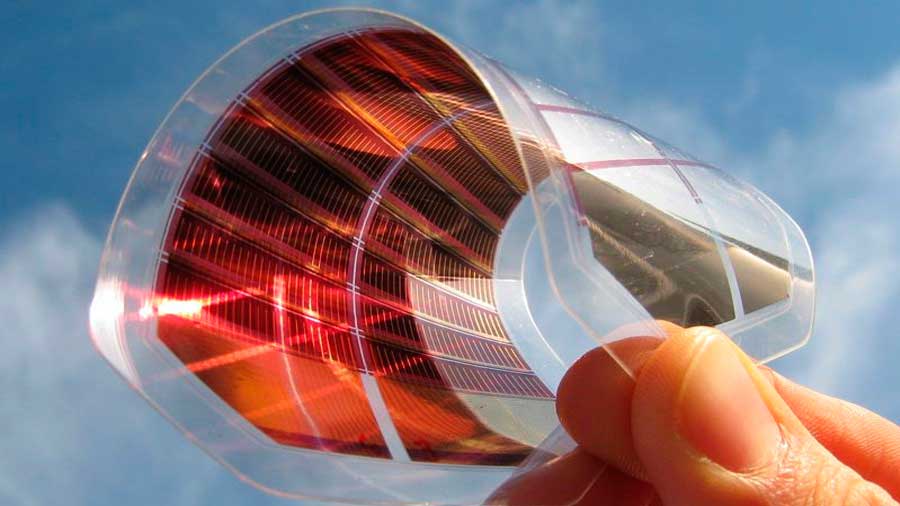
Embedding into the fabric structure (clothes or seats) requires a flexible keyboard, flexible display, flexible pressure and temperature sensors . All this today has a place to be.
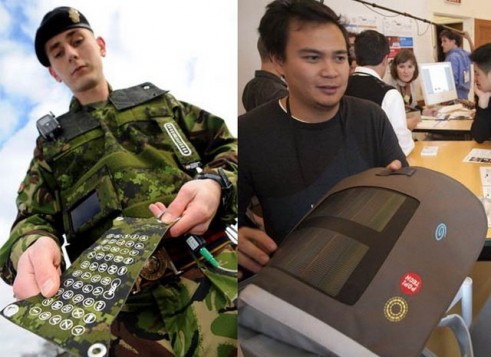
Marching together
The tendency to embed various useful devices has even reached the slippers, from which, for example, you can make a vacuum cleaner. For this purpose, dust collector nozzles, dust containers, a power source and an electric motor with a miniature air impeller are placed in their soles. It is possible that in order to keep the barracks clean, a similar device can be built into the boots.
Electronic wearable navigation systems provide the definition of the owner’s coordinates on the ground and help you choose the right route when driving, as well as provide the transfer of coordinates to provide emergency assistance in dangerous situations. Often they are used for military purposes . A few years ago, Honeywell introduced a series of magnetoresistive sensors , on the basis of which miniature navigation modules with a GPS receiver, housed in a belt , are implemented. A special algorithm takes into account any movements of a person: walking, running, shifting side, crawling, reversing, even marking time. The automatic compass determines the position of the operator's body - is it standing or lying. Low power consumption allows you to carry the device on all the time. Barometric altimeter determines the number of the floor when the object moves inside the building. Software can be modified remotely. The module does not require the connection of additional motion sensors that are mounted, for example, on the legs. Without all this, a modern soldier may feel completely insecure.

The first integrated combat soldier system Land Warrior appeared more than fifteen years ago. It included a built-in computer, as well as walkie-talkies, guided weapons systems. The eye micro-display (almost like a Terminator) is built into the helmet, and the navigation system is built into the belt and shoes. All these devices are interconnected by communication channels. With their help, a soldier can transmit voice and digital data, commands, images, both to other members of his unit and to the commanders of units.

New types of “smart clothes” for the military (smart shirt) appear, which contains a sensor system for monitoring the condition and position: local body temperature, ECG, pulse, wounds or burns, integrity of clothes. The undershirt is permeated with fiber optic strands, which allow, in particular, indirectly control the integrity of the skin, since the penetrating injuries disrupt the local conductivity of the network. The position of the affected areas on the body is determined by a bullet or splinters and the type of injury. Micro-syringes with electronic control from an autonomous wearable computer or from the unit commander's terminal for the introduction of anti-shock drugs or antidotes are embedded in the same clothes. Syringe activation can be carried out either on the initiative of the fighter himself, or on command from a portable electronic unit or via radio from the command terminal based on sensor readings when the fighter loses consciousness (for example, after being injured or as a result of a contusion). "Smart clothes" can also be combined with body armor . In this case, protective clothing contains reinforced power elements and integrated sensors pulse, temperature, and mechanical damage textile "armor".
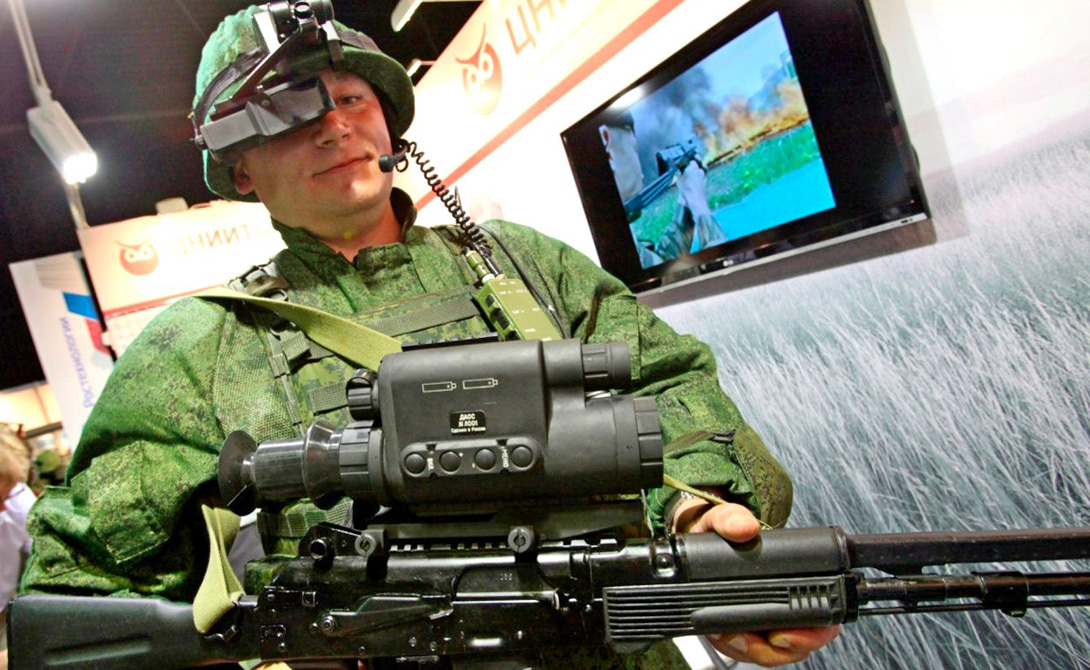
To some extent, exoskeletons for the military and people with disabilities , which successfully complement and replace insufficient human capabilities , can also be attributed to electronic clothing.

However, wearable electronics is only a stage of transition to electronics embedded in the human body, which will become electronic. Can we really control devices with the power of thought? Do not turn into appendages of cars? Today, engineers and philosophers, designers and doctors, security experts and educators are arguing about this.
And we will also return to this topic soon.
Publication author:
Alexander GOLYSHKO, Systems Analyst, Technoserv Group of Companies
')
Source: https://habr.com/ru/post/343972/
All Articles
